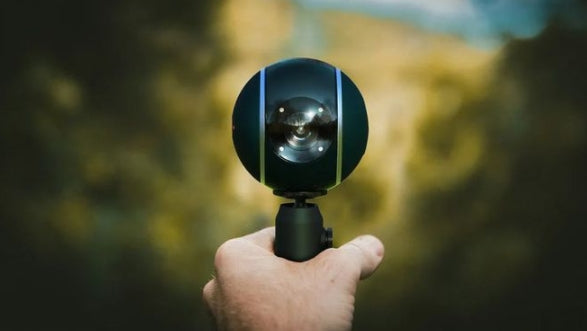ToF vs Structured Light vs LiDAR: 3D Sensing Technology Guide

In the era of smart automation, autonomous vehicles, industrial robotics, and immersive AR/VR experiences, 3D sensing technology plays a pivotal role in enabling spatial awareness and interaction. Among the most widely used 3D vision solutions today are Time-of-Flight (ToF) cameras, Structured Light, and LiDAR. Each comes with distinct advantages, trade-offs, and ideal use cases. This article provides a comprehensive comparison to help engineers, developers, and enterprises make informed choices.
🔍 What Is Structured Light?
Structured Light projects a known pattern (like stripes, grids, or dot matrices) onto a surface and analyzes how the pattern deforms when hitting the object. Using triangulation algorithms, it reconstructs 3D geometry with high accuracy.
Pros:
-
High precision at short range—ideal for facial recognition, cultural preservation, and 3D scanning.
-
Cost-effective hardware due to maturity and wide adoption.
Cons:
-
Sensitive to ambient light—performance drops in bright or outdoor environments.
-
Not suitable for moving objects—requires a static subject for accurate measurement.
🔦 What Is LiDAR?
LiDAR (Light Detection and Ranging) emits laser pulses or modulated light to measure the time-of-flight (ToF) or phase shift of the returning signals. It builds detailed 3D point clouds representing the surrounding environment.
Pros:
-
Long-range capability—from tens to hundreds of meters, with centimeter- or millimeter-level accuracy.
-
High environmental robustness—works day or night, in fog or rain.
-
Versatile applications—autonomous driving, UAV mapping, infrastructure inspection, geoscience.
Cons:
-
Expensive and bulky—especially mechanical or high-performance solid-state LiDAR.
-
Higher power consumption—may not suit size- or power-constrained systems.
🕒 What Is a ToF Camera?
ToF cameras emit modulated or pulsed infrared light and calculate the time it takes for the light to reflect off objects and return to the sensor. Each pixel independently measures distance, generating a real-time depth map.
Types of ToF:
-
Pulsed ToF (P-ToF): High accuracy, used in industrial and scientific setups.
-
Continuous-Wave ToF (CW-ToF): Lower power, suitable for mobile or embedded devices.
Pros:
-
Fast and real-time depth capture—perfect for dynamic scenes like hand tracking or robot navigation.
-
Ambient light immunity—works in bright or dark environments.
-
Balanced cost-performance—well-suited for consumer and industrial mid-range applications.
📊 Side-by-Side Comparison Table
| Technology | Depth Principle | Range | Accuracy | Speed | Environment Adaptability | Typical Applications |
|---|---|---|---|---|---|---|
| Structured Light | Pattern projection + triangulation | 0.1–1 m | Sub-millimeter | Low | Poor—light sensitive | Facial ID, 3D scanning, cultural artifact modeling |
| ToF Camera | Time-of-Flight (light travel time) | 0.2–10 m | Millimeter-level | High | Good—robust to lighting | AR/VR, gesture control, smart robotics, industrial vision |
| LiDAR | Laser ToF or phase-based measurement | 10–300+ m | Millimeter to cm | Medium to high | Excellent—all-weather | Autonomous vehicles, drones, smart cities, infrastructure |
🌟 When To Choose ToF
-
For real-time interaction and short- to mid-range depth sensing, ToF cameras strike a great balance of speed, cost, and accuracy. They’re highly suitable for:
-
Smart robots
-
Gesture-controlled interfaces
-
Augmented reality systems
-
Industrial automation tasks
-
🤝 Fusion Is the Future: ToF + LiDAR + Structured Light
Rather than compete, these technologies are increasingly complementary in advanced vision systems:
-
ToF + Structured Light: Combines real-time performance with high-detail modeling.
-
ToF + LiDAR: Blends mid- and long-range sensing for robust spatial awareness across indoor and outdoor domains.
As computing power, AI algorithms, and optics continue to evolve, hybrid 3D sensing systems will become mainstream in areas like autonomous mobility, smart factories, and human-machine interaction.
✅ Final Thoughts
Choosing the right 3D sensing technology—ToF, structured light, or LiDAR—depends on the application’s range, precision, real-time needs, environmental conditions, and budget. Mastering these differences enables developers and businesses to optimize for performance, cost-efficiency, and user experience, pushing the boundaries of what machines can see and understand.
30m 40m 50m LiDAR navigation obstacle avoidance scanner AGV car obstacle avoidance path planning Industrial grade LiDAR
After-sales Support:
Our professional technical team specializing in 3D camera ranging is ready to assist you at any time. Whether you encounter any issues with your TOF camera after purchase or need clarification on TOF technology, feel free to contact us anytime. We are committed to providing high-quality technical after-sales service and user experience, ensuring your peace of mind in both shopping and using our products.








